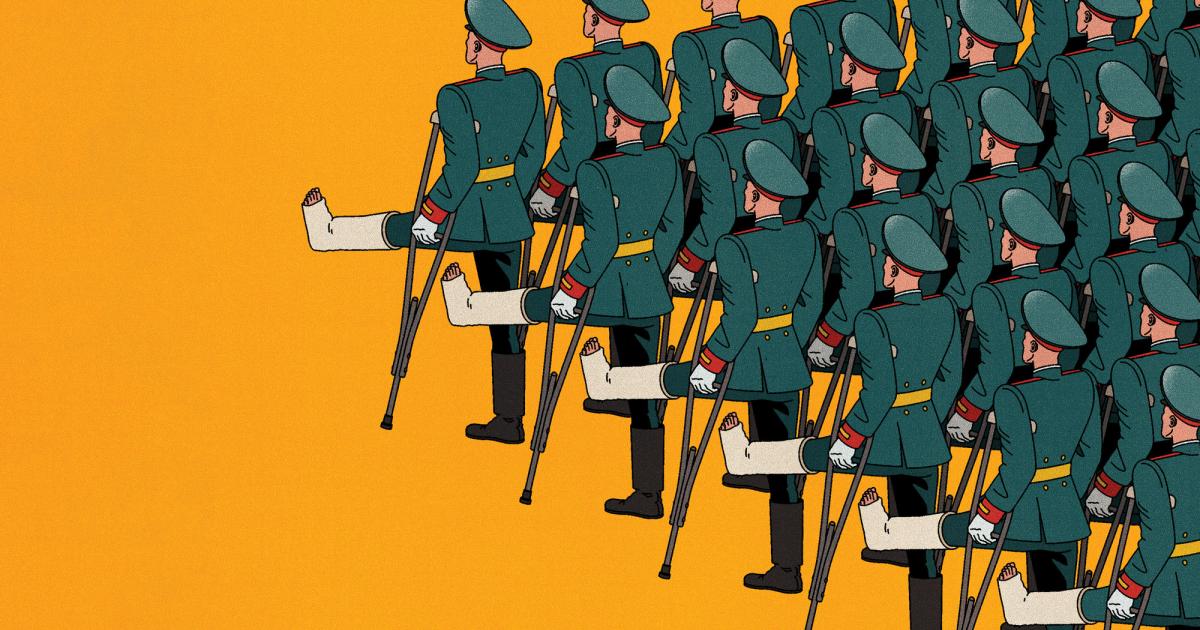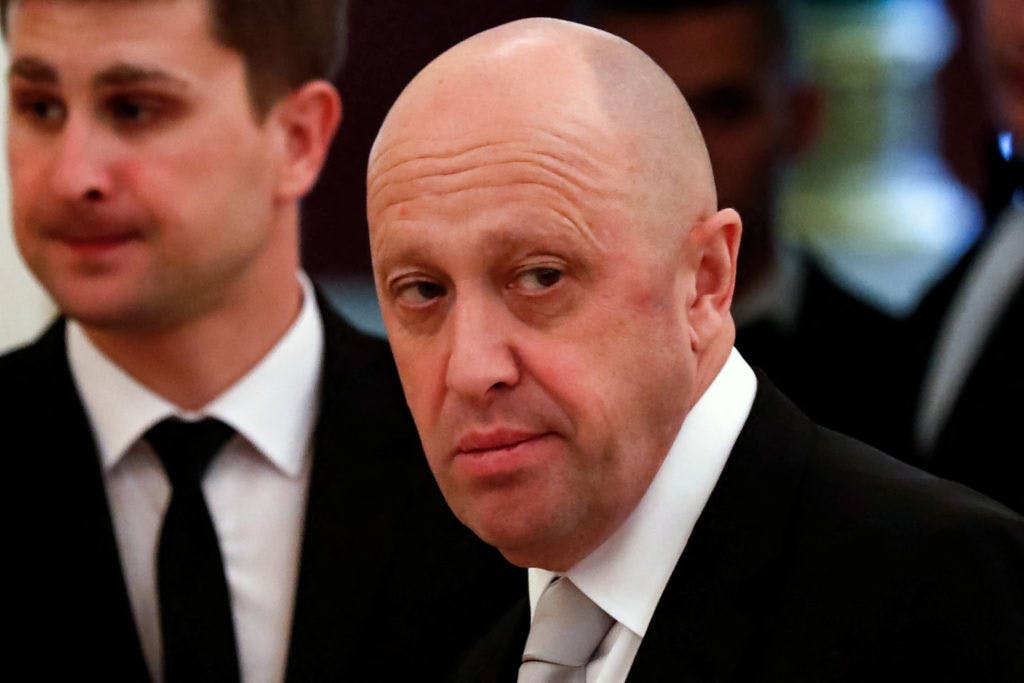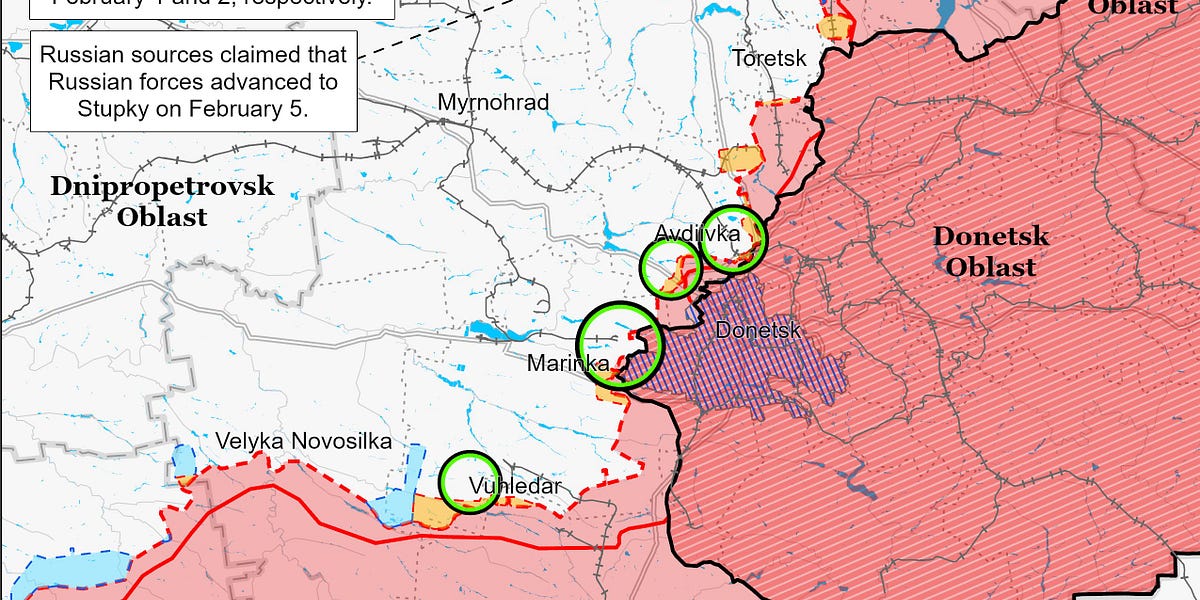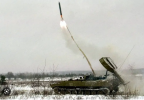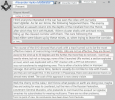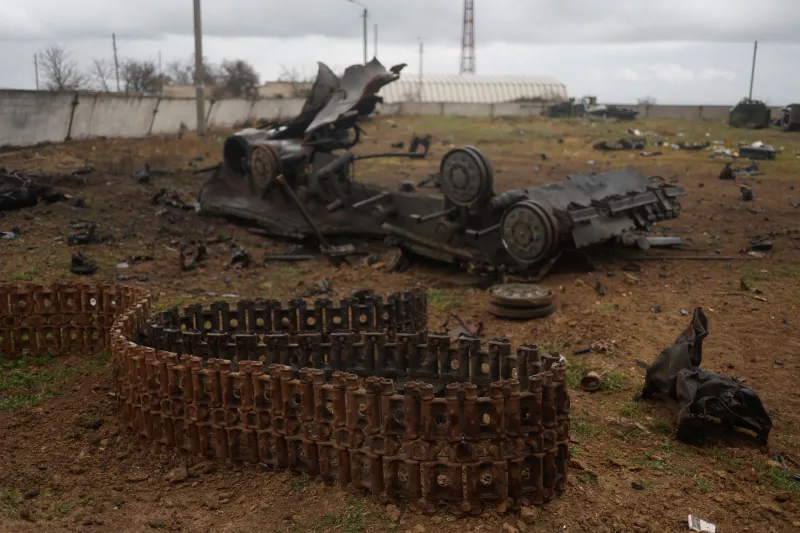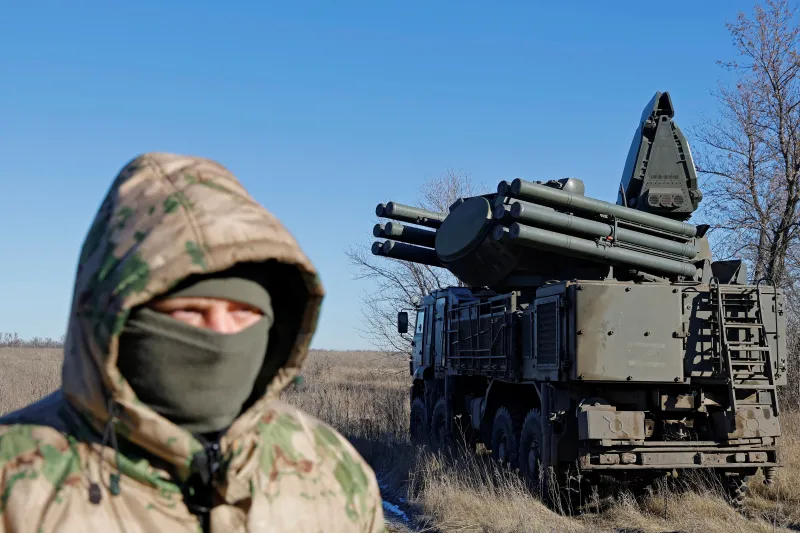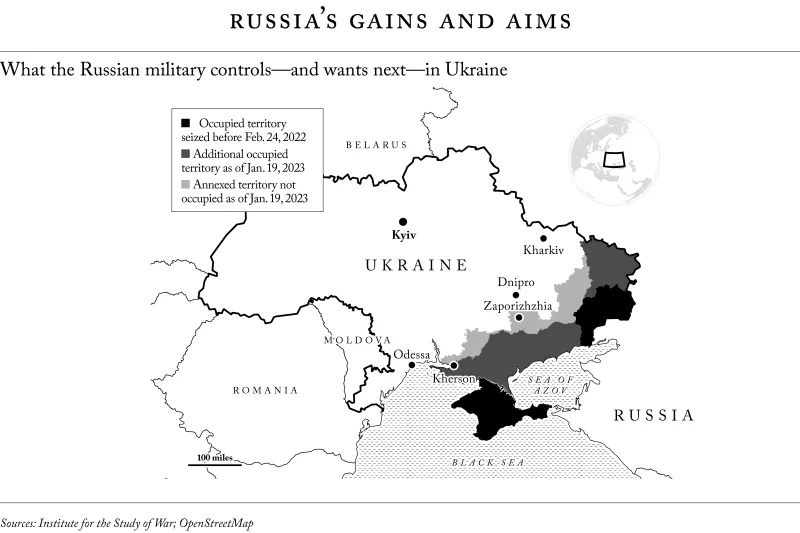Antares
Respected Leader
Katsoin että tätä pari viikkoa vanhaa viestiä ei olisi laitettu tänne. Väitetysti tyyli jolla Wagnet ja sitä tukevat joukot hyökkäsivät Bakhmutin seudulla (Soledarin pohjoispuolella). Saavuttivat menestystä, tosin väitetysti kovin tappioin:
Hän on ottanut viestiinsä pari kuva alkuperäisen tekstin käännöksestä, tässä spoilerin takana koko tekstin käännös (lihavointi minun lukemisen helpottamiseksi):
https://t.me/Tsaplienko/24186
CAPLIENKO_UKRAINE FIGHTS
✔
"Unpacking" the tactics of the Wagnerites north of Soledar through the eyes of a very competent Ukrainian officer, one of the participants in the defense.
Details of tactics:
At first, the first group, usually of 8 people, is put forward to the finish line. The whole group is maximally loaded with BC (Perpetuan mukaan BC = ammo mutta oletan että voisi tarkoittaa luotien ja lippaiden lisäksi käsikranaatteja yms. Kirjoitan silti jatkossa tämän jälkeen "BC = ammo"), each has a "Bumblebee" flamethrower. Their task is to get to the point and get a foothold. They are almost suicidal. Their BC (BC = ammo) in case of failure is intended for the following groups.
The group gets as close as possible to the Ukrainians and digs in as quickly as possible. A white cloth or other sign is left on the tree so that the next group can navigate in the event of the death of their predecessors and find where shelters have already been dug and where there are weapons from BC (BC = ammo).
During the fire contact, the "Wagners" detect Ukrainian firing positions and transfer them to their artillery. As a rule, 120-mm and 82-mm mortars work in them. Up to 10 mortars simultaneously begin to suppress the discovered Ukrainian position. Artillery training can last several hours in a row.
During this time, 500 meters from the first group, the second group concentrates. She has lighter equipment. And under the cover of artillery, this group begins an assault on the Ukrainian position. If the second group fails to take a position, it is followed by the third and even the fourth. That is, four waves of eight people for one Ukrainian position.
One of the groups has a UAV operator. He coordinates artillery fire directly from the battlefield.
If they manage to suppress the Ukrainian position, they "clear" it, using a drone, grenades, small arms.
How to fight effectively:
Have light "armor" at a distance of short jumps. As soon as the drone operators notice the movement of the occupiers towards the positions, they inform the "armor". But quickly suppresses the attack of the "Wagnerians" even with machine guns. If there is no "armor", then it is difficult to restrain such assault actions.
Fighters should be prepared for shooting battles at a short distance.
The main reason for the success of the Russians and the defeat of the Ukrainians in such small assault operations may be the lack of counter-battery combat. Artillery begins to shell the attackers instead of suppressing the enemy's artillery. Without the cover of the same mortars, the assaults of the "Wagnerians" simply suffocate.
And for effective counter-battery combat, a larger number of drones and their operators are needed in positions.
I hope these tips will be useful for our fighters.
I repeat, the conclusions are not mine, but those of one of the officers who is now holding the defense in Soledar. And I'm keeping my fingers crossed that our guys hold an important city.
t.me/Tsaplienko/24186
135.8K views
edited Jan 9 at 21:47
Suomennan alle osuuden jossa käsitellään "kuinka taistella tällaista vastaan" (kirjoittaja painottaa että nämä opit eivät ole hänen keksimiään vaan hän siteeraa alueella taistelevaa upseeria):
- pitäisi olla kevyitä panssarijoukkoja lyhyen etäisyyden päässä linjasta. Heti kun drone-operaattori havaitsee tällaisen hyökkäyksen, se antaa hälytyksen näille panssarijoukoille jotka ajavat torjumaan hyökkäyksen. Jopa konekiväärituli (oletan silti että tarkka ja runsas) riittää pysäyttämään (käyttää sanaa suppress joka ei suoraan tarkoita tappamista) hyökkäyksen MUTTA jos tällaisia panssarijoukkoja ei ole, tällaisen hyökkäyksen torjunta on vaikeaa (oletan että asemia puolustavan jalkaväen tulivoima ei riitä JA runsas, kohtuu tarkka kranaatinheitintuli on iso ongelma vaikka olisikin juoksuhaudassa tai poteroissa)
- taistelijoiden tulisi olla valmiit tulitaisteluihin lyhyillä etäisyyksillä
- yksi syy tällaisten taktiikoiden onnistumiseen voi olla Ukrainan rajallinen vastatykistötuli tällä alueella. Ukrainan tykistö iskee hyökkäävää joukkoa vastaan, kun pitäisi (kirjoituksen mukaan) iskeä omia puolustusasemia vastaan hyökkääviä heittimiä vastaan. Jos hyökkääjä ei saa heittimiltä tukea, wagnerilaisten hyökkäys tukehtuu.
- tehokasta vastatykistötoimintaa varten täytyy olla suuri määrä droneja ja niiden lennättäjiä (minun kommentit: tässäkin minun mielestä korostuvat lyhyet taisteluetäisyydet sekä heitinten käyttö: dronella tuskin nähdään 10-12 km tai kauempaa ampuvaa tykistöä mutta 82mm ja 120mm heittimet voidaan nähdä ja paikallistaa. Oletan että maasto ja koordinaatit ovat selvillä joten dronen lennättäjä kykenisi melko nopeasti ohjaamaan omien heittimien ja tykistön tulen vihollisen asemiin. Tässä tapauksessa siis kun puhutaan "vastatykistötulesta" niin ei tarkoiteta vastatykistötutkia yms. vaan yksinkertaisempia menetelmiä (tutkista varmasti olisi hyötyä, en kiistä sitä).
Tulee mieleen tuosta kirjoituksesta saksalaisten sturmtruppen taktiikat ensimmäisen maailmansodan aikaan, niissäkin kärsivät suuria tappioita.
Aikaisemmassa viestissä oli ukrainalaisten näkemys wagnerilaisten hyökkäystaktiikasta sekä kuvaus menetelmistä, joilla se torjuntaan.
Tässä viestissä on kuvailtu wagnerilaisten taktiikkaa, mutta nyt lähde on venäläinen kanava.
Lainaan alle koko ketjun tekstin:
The Wagner Group's 'human wave' attacks, which have left the area around Bakhmut and Soledar strewn with the bodies of dead Wagner fighters, have been described in detail by a Russian source. It explains the brutal calculations behind Wagner's seemingly suicidal tactics.
The 'Russian Criminal' website, which is linked to the VChK-OGPU Telegram channel, reports what a source – likely within Wagner – has told it about the mercenary group's approach to using recruited convicts to attack Soledar, sustaining huge casualties along the way.
"The most experienced and well-prepared group of stormtroopers comes first, with excellent equipment. It's comprised of eight men, each with a 'Bumblebee' [possibly meaning an RPO-A Shmel thermobaric rocket launcher, effective against fortified positions].
"Whatever happens, the group must reach the firing line. "Whatever happens" is not a turn of phrase, but a task, the failure to complete which will end in execution [by Wagner], regardless of any [mitigating] factors.
"Once fire contact has been made [with the enemy], the group digs into positions. Digging in is taught as meticulously as combat operations, so by military standards, digging in is almost instantaneous and very effective.
"The area the group has reached is marked (a rag on a tree or something similar). Even if the group is demolished to zero, the next one already realises where the previous one has reached. The main task is to make contact, dig in and transfer positional data to the artillery.
"Artillery can fire from an hour to several hours. And here is the first cause of conflict with the [Russian] army: if there are not enough shells, instead of a successful attack you get hopeless meat from the stormtroopers.
"The first group is followed by the second, also eight men, but with much lighter equipment. Their task is to jump into the positions as soon as the artillery shells finish their work.
"Sometimes there is an order not to wait for the shelling to end – the 'Musicians' are so disciplined that they will go anyway, because they stand a fighting chance of surviving.
"Nowadays there are not enough shells and because of that the first groups hardly survive – the main blow is coming at them and even training does not solve all the problems there.
"Even before, losses in the first group were inevitable, but now the survivability of groups as a whole has fallen to critical values. And to replace them with just anyone increases costs even more, and the influx of people has now collapsed.
"Groups of 8 people go in waves - usually 4 waves are prepared for the attack. But there have been cases in Soledar where it took 14 waves to take one area. Of course there were survivors, but the casualties were a hundred or more. That's for one section.
"Groups have drone operators to lead the whole group into position to clear the area. At the same time, the lightly wounded do not slouch and do not lie down – for that, they could shoot you in the legs and leave behind.
"This tactic is the only possible way to achieve results and advance in such conditions. The line of defense in Soledar has been cleverly constructed for years, the army command has neither the possibility nor the desire to advance there.
"That's basically why the task was handed to Wagner.
From the outside, it may look unreasonable to take such a high casualty rate deliberately, but try to look at it in a different way: even 4 waves of 8 men – that is 32 men killed at the worst.
"Throw in even a regiment – they will lose much more and even they will fail to cope with the task. In percentage terms they will lose less, but in absolute numbers, more. Therefore losses of over 50% for an attack are not bad, if there is a result.
"There is much less manpower for assault groups now, shells are also in short supply. And if the artillery is suppressed, then no one will call the stormtroopers back anyway, they just mop up without cover.
"If there are more groups in reserve, you can send in 5, and 6, and 7 waves, just to finish the result. This is not an army, here it is better to have more initiative than to underdo it.
"The 'Musicians' have their own training – with a crazy intensity, if you are without experience – but they teach a very narrow range of tasks.
"And the newcomers from the penal colonies are very well disciplined: first they are shown video executions, then very soon they encounter their first real examples, and then they get used to such discipline completely.
"Another plus from this [in contrast to the Russian army] is that it is not the practice in Wagner to reassign those [qualified as] artillery gunners to the stormtroopers, unless as punishment. Good gunners are also worth their weight in gold.
"The army will not be able to replace Wagner in hot areas, this is not even considered. In modern warfare, the number of soldiers is not an indicator at all. But, again, the question remains open – what to do about the shortage of shells (120 and 80 mm)?
"There is a concept of "efficiency relative to the situation", and so this efficiency can be high, but if the situation is deadlocked, then the main issue is still not resolved.
"Exchanging people for territory is beneficial when the territory is small and people in reserve are plentiful. If, on the other hand, you have to chop for every metre and people have become scarce, problems begin to arise.
"As a result, losses are growing and progress slows down. The recruitment of convicts at first gave a full-flowing river of people, now they are gone. At the beginning of the war there was talk of Syrian mercenaries, some even came. But they are not fit for this war.
"Among the 'Musicians' they say aloud that "we're about to put the squeeze on and take everything here." But among themselves, everyone expects that we will be removed from the assault on a number of directions.
"And even if a large mobilisation begins right tomorrow, it will not be possible to immediately recruit refuseniks in the required numbers, but they still need to be run in, brought to the desired condition, …
"because otherwise it will not even be possible to spend them effectively. It takes time, it takes a lot of shells. And we have neither one nor the other."
Source: https://rucriminal.info/ru/material/idushhie-na-smert
The 'Russian Criminal' website, which is linked to the VChK-OGPU Telegram channel, reports what a source – likely within Wagner – has told it about the mercenary group's approach to using recruited convicts to attack Soledar, sustaining huge casualties along the way.
"The most experienced and well-prepared group of stormtroopers comes first, with excellent equipment. It's comprised of eight men, each with a 'Bumblebee' [possibly meaning an RPO-A Shmel thermobaric rocket launcher, effective against fortified positions].
"Whatever happens, the group must reach the firing line. "Whatever happens" is not a turn of phrase, but a task, the failure to complete which will end in execution [by Wagner], regardless of any [mitigating] factors.
"Once fire contact has been made [with the enemy], the group digs into positions. Digging in is taught as meticulously as combat operations, so by military standards, digging in is almost instantaneous and very effective.
"The area the group has reached is marked (a rag on a tree or something similar). Even if the group is demolished to zero, the next one already realises where the previous one has reached. The main task is to make contact, dig in and transfer positional data to the artillery.
"Artillery can fire from an hour to several hours. And here is the first cause of conflict with the [Russian] army: if there are not enough shells, instead of a successful attack you get hopeless meat from the stormtroopers.
"The first group is followed by the second, also eight men, but with much lighter equipment. Their task is to jump into the positions as soon as the artillery shells finish their work.
"Sometimes there is an order not to wait for the shelling to end – the 'Musicians' are so disciplined that they will go anyway, because they stand a fighting chance of surviving.
"Nowadays there are not enough shells and because of that the first groups hardly survive – the main blow is coming at them and even training does not solve all the problems there.
"Even before, losses in the first group were inevitable, but now the survivability of groups as a whole has fallen to critical values. And to replace them with just anyone increases costs even more, and the influx of people has now collapsed.
"Groups of 8 people go in waves - usually 4 waves are prepared for the attack. But there have been cases in Soledar where it took 14 waves to take one area. Of course there were survivors, but the casualties were a hundred or more. That's for one section.
"Groups have drone operators to lead the whole group into position to clear the area. At the same time, the lightly wounded do not slouch and do not lie down – for that, they could shoot you in the legs and leave behind.
"This tactic is the only possible way to achieve results and advance in such conditions. The line of defense in Soledar has been cleverly constructed for years, the army command has neither the possibility nor the desire to advance there.
"That's basically why the task was handed to Wagner.
From the outside, it may look unreasonable to take such a high casualty rate deliberately, but try to look at it in a different way: even 4 waves of 8 men – that is 32 men killed at the worst.
"Throw in even a regiment – they will lose much more and even they will fail to cope with the task. In percentage terms they will lose less, but in absolute numbers, more. Therefore losses of over 50% for an attack are not bad, if there is a result.
"There is much less manpower for assault groups now, shells are also in short supply. And if the artillery is suppressed, then no one will call the stormtroopers back anyway, they just mop up without cover.
"If there are more groups in reserve, you can send in 5, and 6, and 7 waves, just to finish the result. This is not an army, here it is better to have more initiative than to underdo it.
"The 'Musicians' have their own training – with a crazy intensity, if you are without experience – but they teach a very narrow range of tasks.
"And the newcomers from the penal colonies are very well disciplined: first they are shown video executions, then very soon they encounter their first real examples, and then they get used to such discipline completely.
"Another plus from this [in contrast to the Russian army] is that it is not the practice in Wagner to reassign those [qualified as] artillery gunners to the stormtroopers, unless as punishment. Good gunners are also worth their weight in gold.
"The army will not be able to replace Wagner in hot areas, this is not even considered. In modern warfare, the number of soldiers is not an indicator at all. But, again, the question remains open – what to do about the shortage of shells (120 and 80 mm)?
"There is a concept of "efficiency relative to the situation", and so this efficiency can be high, but if the situation is deadlocked, then the main issue is still not resolved.
"Exchanging people for territory is beneficial when the territory is small and people in reserve are plentiful. If, on the other hand, you have to chop for every metre and people have become scarce, problems begin to arise.
"As a result, losses are growing and progress slows down. The recruitment of convicts at first gave a full-flowing river of people, now they are gone. At the beginning of the war there was talk of Syrian mercenaries, some even came. But they are not fit for this war.
"Among the 'Musicians' they say aloud that "we're about to put the squeeze on and take everything here." But among themselves, everyone expects that we will be removed from the assault on a number of directions.
"And even if a large mobilisation begins right tomorrow, it will not be possible to immediately recruit refuseniks in the required numbers, but they still need to be run in, brought to the desired condition, …
"because otherwise it will not even be possible to spend them effectively. It takes time, it takes a lot of shells. And we have neither one nor the other."
Source: https://rucriminal.info/ru/material/idushhie-na-smert



